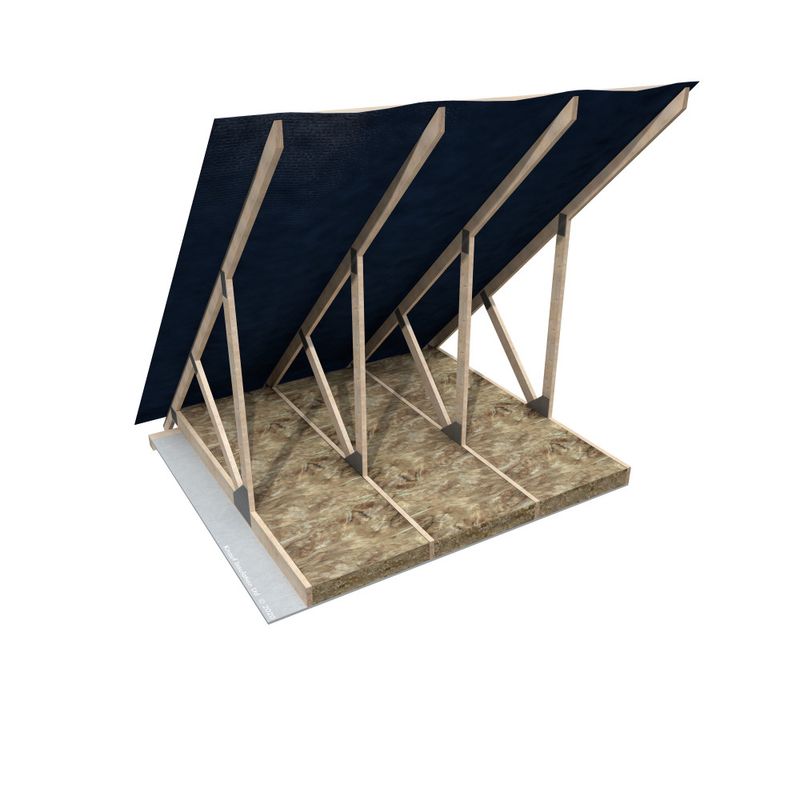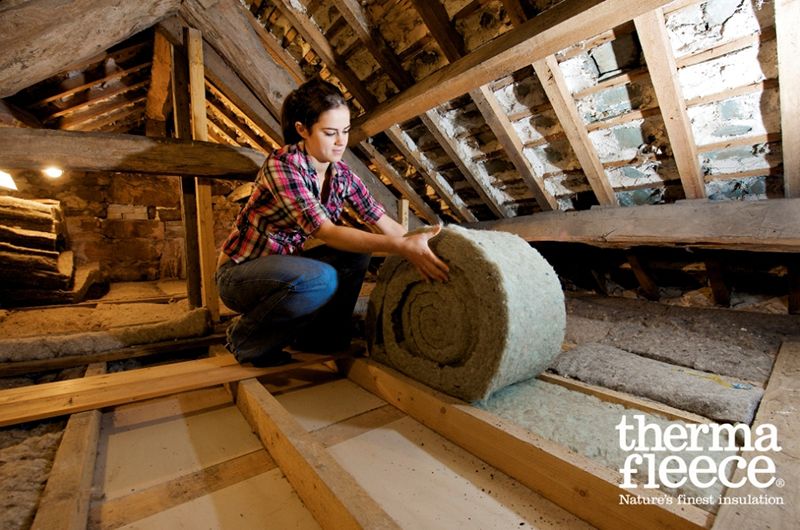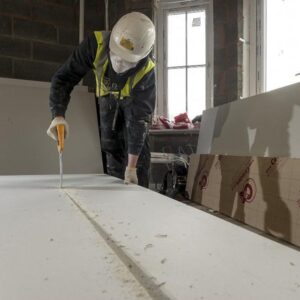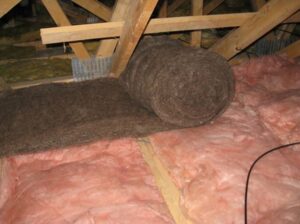Insulation goes a long way towards making your home more energy efficient and comfortable by preventing heat loss during the winter as well as excessive heat gain during the summer.
So, it’s a good idea to insulate all parts of your home – but especially your roof. That’s because approximately one-quarter of heat loss in your home takes place through your roof.
This is huge!
Luckily, so are the benefits of loft insulation.
The question is:
How much loft insulation do I need?
And how about the proper loft insulation thickness?
At Roofing Superstore, we decided to take a deep dive into all things loft insulation so that we can help you figure out just how much loft insulation you should have for your next project.
Here’s what we have in store for you.
Table of contents:
- Warm roof vs cold roof
- How thick should loft insulation be?
- How do you calculate how much insulation you need?
- Can you use too much loft insulation?
Warm roof vs cold roof

Before you can start making any calculations, you need to decide whether you’re going for a warm roof or a cold roof.
But what’s the difference between the two?
Here’s the deal:
If you’re planning on using your loft as living space, such as a spare bedroom, you’ll need to insulate your pitched roof. Here, you’ll install loft insulation between rafters and underneath them. You can then further cover it with plasterboard to create a warm roof.
In addition to increasing your living space, a warm roof will protect any tanks and pipes from freezing during the winter months. That’s one less thing you need to worry about.
On the downside, a warm roof is quite expensive, and you’ll also have to insulate any gable walls and chimneys, which means the total expenses can add up considerably.
If that doesn’t sound like your cup of tea or you only use your loft as storage space where you keep things like the Christmas decorations, you might want to opt for a cold roof. In this case, you’ll fit insulation between and over the joists which sit directly above your ceiling.
The key takeaway is:
If you go for a warm roof rather than a cold roof, you’ll need more insulation.
However, that’s not the only factor which determines the actual amount of insulation and how much you’ll have to pay.
Next, we’re going to consider loft insulation thickness.
How thick should loft insulation be?
Loft insulation building regulations have varied considerably over the years. For instance, back in the mid-1960s, the minimum recommended thickness of loft insulation was a mere 25mm; today, this figure stands at 270mm for mineral wool.
Here’s a table that illustrates how the figures have evolved.
| Year | Recommended Insulation Thickness |
|---|---|
| 1965 | 25mm |
| 1975 | 60mm |
| 1985 | 100mm |
| 1990 | 150mm |
| 1995 | 200mm |
| 2002 | 250mm |
| 2003 | 270mm |
The trend is perfectly clear for everyone to see:
The minimum recommended insulation thickness has increased dramatically since the mid-1960s. And since Building Regulations haven’t been updated for two decades, we’re probably due for another upward revision before too long.
Having said that:
We should point out that the key term in the equation is not thickness per se but the U-value (thermal transmittance) of the insulation – the target being 0.2 W/m²k or lower as per current regulations.
Why is that?
To put it simply, some materials are better at insulating than others. For example, PIR boards can achieve the target of 0.2 W/m²k with a thickness of only 150mm.
What’s more:
A mere 35mm of multifoil insulation, a highly innovative solution, can achieve a tremendous U-value of as little as 0.04 W/m²k.
So, in case you were wondering – is 200mm enough for loft insulation? – you now know that it depends on the types of insulation you’re going to use.
All of this brings us to the $64,000 question, which is:
How do you calculate how much insulation you need?

Now that you know what factors you need to take into account, you’re ready to estimate how much insulation for your roof space your project will require.
Once you’ve decided whether to go for a cold roof or a warm roof, follow these steps.
Step 1: Calculate your roof area
Here’s how you go about calculating your roof area:
For a cold roof, simply multiply the width of your loft by its length.
For a warm roof, multiply the length and the height, from eaves to ridge, of your internal loft space. Then, multiply the figure by two.
To calculate the size of a gable wall (also for a warm roof project), multiply the width of the loft by the height of the wall, measured from the floor to the ridge. Then, divide the figure by two.
Next:
Step 2: Assess the condition of any existing insulation
Obviously, that’s not something you need to do in a new build. So, if that’s the case, simply move on to the next step.
Otherwise, you’ll need to thoroughly examine the type (mineral, PIR, multifoil, etc.), thickness and overall condition of any insulation rolls, boards or foam you might have.
At this point, you should be able to establish whether you’ll simply need to top up what’s already there with a certain amount in order to achieve the target U-value of 0.2 W/m²k or throw away everything and start from scratch.
Step 3: Make the final calculations & establish the total loft insulation cost

Now that you know exactly how big an area you’re insulating, it’s time to crunch the numbers and come up with an answer to the other vital question – namely, how much does it cost to board my loft?
Once you’ve decided on an insulation type and brand, all you need to do is divide the total area which needs to be covered by the area a single insulation roll or board can cover.
Still a bit fuzzy?
Here’s a quick example:
Say, for instance, that you’ve decided to top up an existing 170mm thick layer of fibreglass insulation over a total area of 68.8m² with the 100mm-thick Knauf Loft Roll 44 Insulation – one of the many excellent solutions available on the market. You’ll notice that one roll of this particular product is sufficient for covering 13.89m².
Using our simple formula, we get:
68.8m² / 13.89m² = 4.953
Rounding that figure up, you’ll find that you need to buy 5 rolls which, at a price of £34.74 (inc. VAT) at the time of writing, will set you back by £173.70.
Keep in mind that when going for an option with a lower U-value, such as multifoil insulation, you’ll need much less thickness!
Can you use too much loft insulation?

Providing your home with sufficient insulation is a great way of making it more energy efficient and comfortable to live in, not to mention raising its overall value.
But is there such a thing as too much insulation?
Not really, so long as you ventilate your home properly to prevent dampness.
That being said:
You don’t want to go overboard with loft insulation thickness. After a certain level, the benefits of insulation are negligible – you’ll simply end up spending way too much money while diminishing your overall loft space.
And nobody wants that.
The good news is:
Now that you know exactly how to calculate how much insulation you need for your loft and roof, you should have no problem getting just the right amount.














